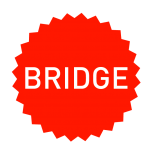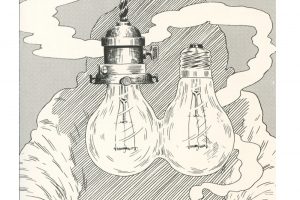In The Human Condition, Hannah Arendt outlines three fundamental human activities: labour, work, and action. Labour represents the basic, cyclical activities that are necessary for survival. Work is what we are normally concerned with, as architects: the fabrication of a durable, objective world. But action, according to Arendt, is what distinguishes human life. Freedom of speech, initiative, and dialogue allow each individual to act – to discover how to live as a human among humans.
Open Forum was one way of building the platform through which action can happen at the school. The discussion touched on many points, but revolved around the potential of the student body to effect change and improve the community of the school.
1. Director Search: Ila Berman has been offered the position. Rick will stick around.
2. Diffusion of Graduate Work: How can graduate students share the knowledge they have been acquiring? Suggestions included printing posters, perhaps like the ones outside faculty offices, recording thesis defenses, and inviting back grads for a lecture series.
3. The Complication of Plotting: There should be more (and cheaper) options other than the presentation-quality plotting offered by ACM. Perhaps a student-run plotter that is always available, like the printers? It is valuable to see drawings to scale before the final deadline.
4. Take Control of the Building: The HVAC system is infamously dumb. Since environmental design is a core part of our curriculum, we should begin by energy modelling our own building, and controlling the systems in it.
5. The Non-Erase Board: The e-classroom should be provided with cleaning fluid for its whiteboard.
6. The Student Lounge: is currently being occupied by objects and supplies. The competition for the redesign of the lounge will probably have to be restaged, since the winners are away from the school. Perhaps there is also some budget for new ping-pong rackets and pool cues.
7. Option Studios Fall 2013: The current 3a class wasn’t informed early enough about the sabbatical leaves of Lola Sheppard and Derek Revington. It is still uncertain what option studios will be offered.
8. Switching Professors: Some studio terms have been taught by the same professor consistently for many years. It would be interesting to consider switching, or perhaps inviting guests.
9. The Workshop: Some find the workshop atmosphere intimidating, especially for those who are just beginning to learn the tools. One suggestion was to hire graduate workshop TA’s who would provide an intermediary between the supervisors and students. There are going to be Youtube tutorials for using equipment, and the workshop wiki provides lots of information. As well, workshop training and hands-on learning could begin earlier in the curriculum.
10. Power in the Mac Lab: The battery packs in the Mac lab do not work, as the 3a class found out during the ice storm. Perhaps simple power bars would be more useful.
11. Website Redesign: The university-run Waterloo Architecture website was redesigned mainly for reasons of visual accessibility. There is still the possibility of a slightly customized layout for Architecture, and the issue is currently being investigated (see this post). In the meantime, make sure to check Bridge!
12. Co-op Database: It would be useful to know where other students have worked and their experiences. A sister site to Bridge is currently being constructed for this purpose.
13. Co-op Fees: The question was: how can we make Waterloo Co-op more accountable for the large fee they contribute to tuition? Most architecture co-ops are not found through the university. Polite group e-mails to the university might help- classes should co-ordinate among themselves.
14. Getting Involved: There are many student activities that do not get help because no one knows about them, or misses the initial meeting. It would be useful to have a notice board (either physical or online) showing what is going on, when, and what kind of help is needed.
The general conclusion was that co-operative action can achieve much. It is now a question of turning the ideas into reality.
“With word and deed we insert ourselves into the human world […]”
(Hannah Arendt, The Human Condition, University of Chicago Press, 1998, p.176)




![[SWAG] December Meeting Minutes](http://waterlooarchitecture.com/bridge/wp-content/uploads/2013/05/SWAG-Logo-300x200.jpg)